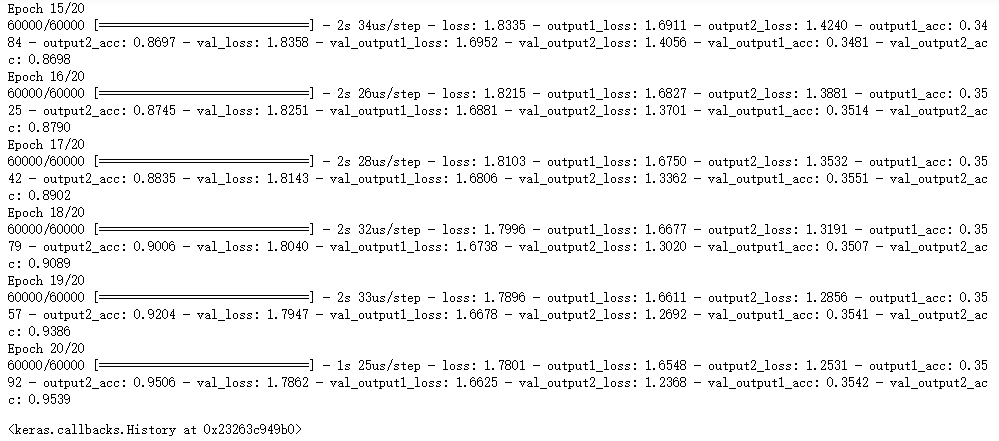# 1. 数据预处理。 import keras from keras.models import Model from keras.datasets import mnist from keras.layers import Input, Dense from tflearn.layers.core import fully_connected num_classes = 10 img_rows, img_cols = 28, 28 # 通过Keras封装好的API加载MNIST数据。 (trainX, trainY), (testX, testY) = mnist.load_data() trainX = trainX.reshape(trainX.shape[0], img_rows * img_cols) testX = testX.reshape(testX.shape[0], img_rows * img_cols) trainX = trainX.astype('float32') testX = testX.astype('float32') trainX /= 255.0 testX /= 255.0 trainY = keras.utils.to_categorical(trainY, num_classes) testY = keras.utils.to_categorical(testY, num_classes)
# 2. 定义模型。 # 定义两个输入。 input1 = Input(shape=(784,), name = "input1") input2 = Input(shape=(10,), name = "input2") # 定义第一个输出。 x = Dense(1, activation='relu')(input1) output1 = Dense(10, activation='softmax', name = "output1")(x) # 定义第二个输出。 y = keras.layers.concatenate([x, input2]) output2 = Dense(10, activation='softmax', name = "output2")(y) model = Model(inputs=[input1, input2], outputs=[output1, output2]) # 定义损失函数、优化函数和评测方法。 model.compile(loss=keras.losses.categorical_crossentropy,optimizer=keras.optimizers.SGD(),loss_weights = [1, 0.1],metrics=['accuracy'])
# 3. 模型训练。 model.fit([trainX, trainY], [trainY, trainY],batch_size=128,epochs=20,validation_data=([testX, testY], [testY, testY]))
